Somnee is a brain mapping headband that uses gentle electrical stimulation – a technology known as transcranial electrical stimulation (or tES) – to help you fall asleep faster and improve your overall sleep quality.
ndSomnee claims that its proprietary brain mapping and personalized stimulation tech is “four times more effective than melatonin.” So for the review, I tested the device’s effectiveness by using several sleep trackers (as well as a clinical-grade EEG) to collect sleep data and compare the metrics from the nights I used Somnee with the nights I didn’t.
Specifically, I measured how long I slept, how much time I spent in the various stages of sleep, the quality of my deep sleep (delta wave activity), my resting heart rate, and my nocturnal heart rate variability (HRV). I also paid close attention to “sleep pressure” (the urge to fall asleep) and my ability to disconnect mentally before bedtime, although these are.
Here are the key takeaways from my testing:
- Somnee helped me fall asleep faster by noticeably increasing my sleep pressure.
- The device had a meaningful impact on my slow-wave intensity (as recorded by Muse S Athena, a brain-sending headband). I also observed a drop in resting heart rate (RHR), an increase in HRV, and an improved overall sleep score (as reported by Eight Sleep, my smart mattress/bed cooling system).
- While Somnee is easy to use and relatively noninvasive (e.g., you can read or watch TV while using the device), you might have to adapt your bedtime routine by avoiding lotions on your forehead and making sure to clean your skin before applying the electrodes.
Overall, my opinion is that Somnee is an effective tool for people who have trouble winding down before bedtime, falling asleep quickly, staying asleep, and waking up refreshed in the morning.
How Somnee Works
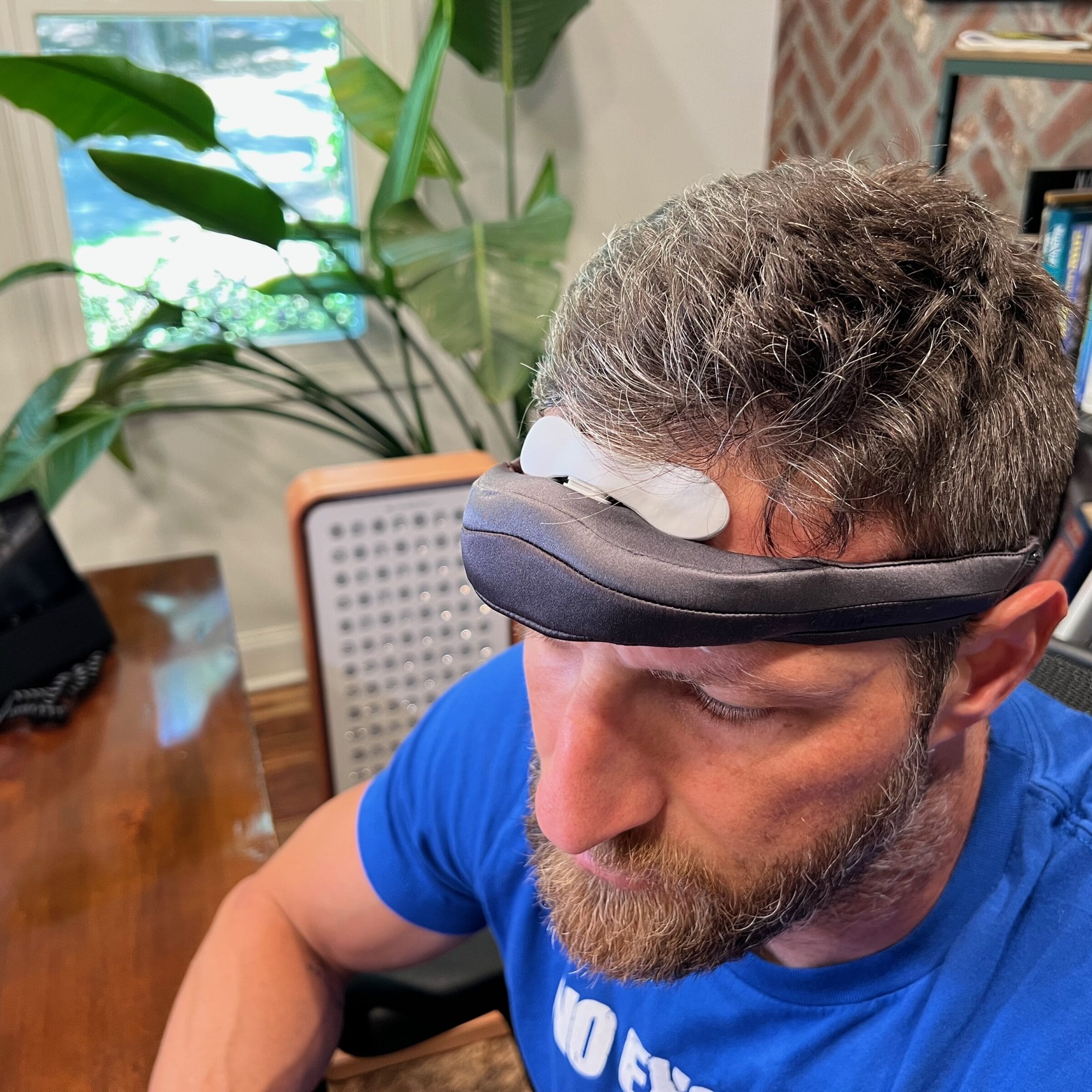

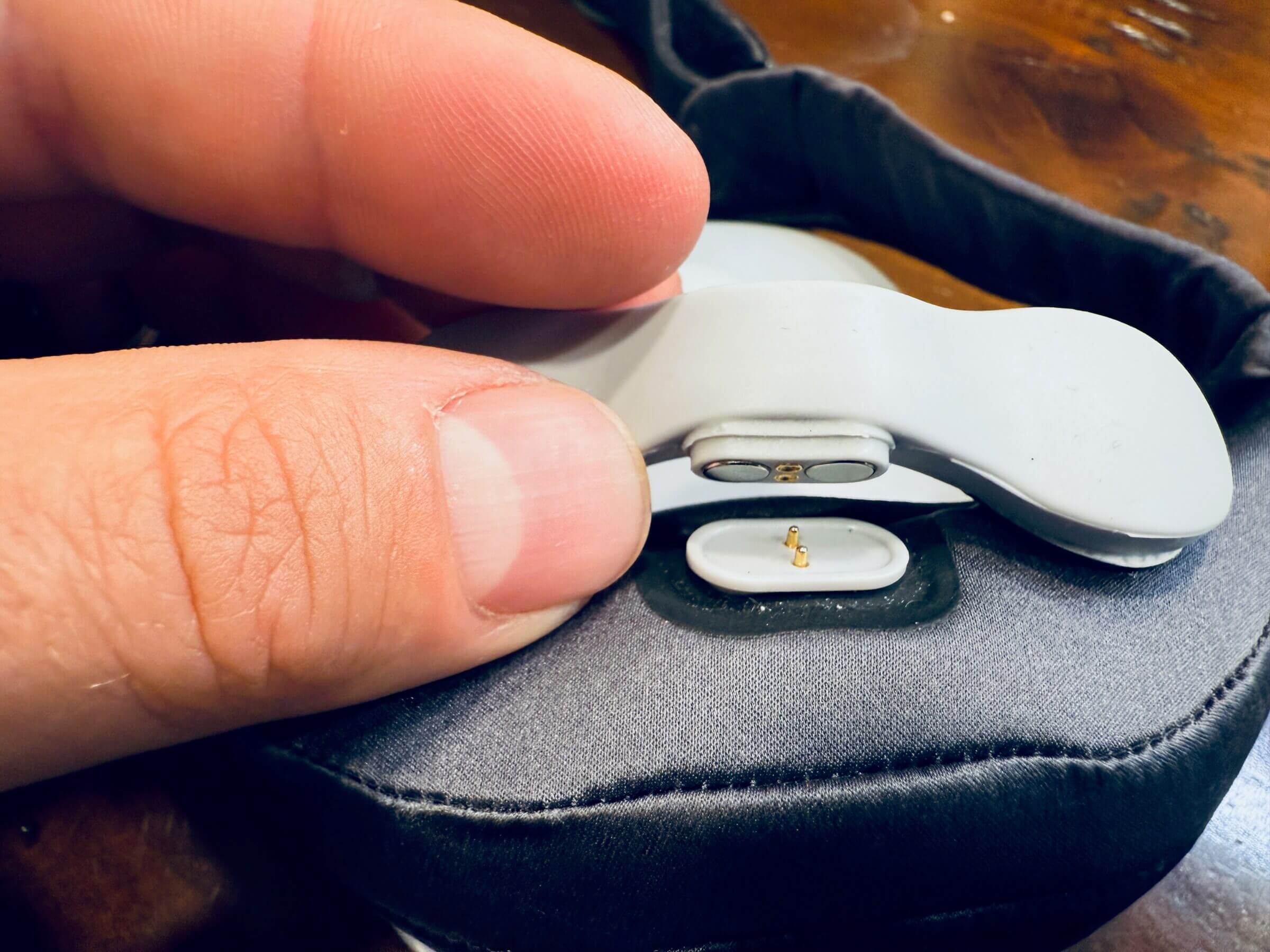
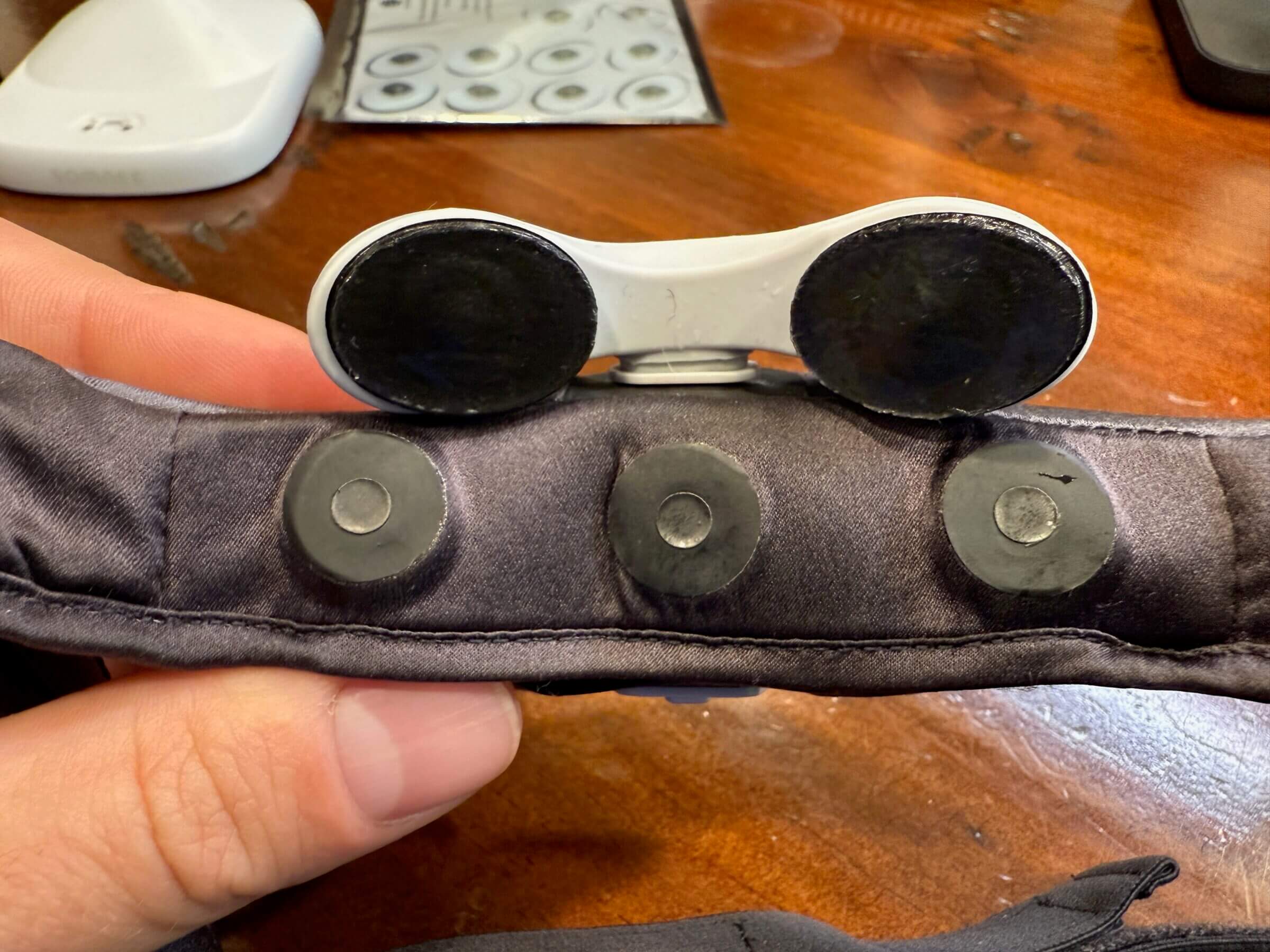
Somnee aims to learn how your brain functions before bedtime by recording and mapping brainwave activity via electroencephalograph (EEG) technology, which uses passive sensors (you don’t feel anything) that measure the electrical activity in your brain.
During your first seven Somnee sessions, the device maps your entire brain to better understand your brainwave patterns. This process is required for the device to be able apply the proper stimulation to either up-regulate or down-regulate your brainwaves for the purpose of sleep optimization.
Once your brain is mapped, Somnee applies gentle electrical stimulation via two electrodes that attach to the top of the headband magnetically. This gentle stimulation nudges your brain’s electrical activity into patterns that are more conducive for sleep.
What’s unique about Somnee compared to other transcranial electrical stimulation (tES) devices is that its stimulation parameters are personalized and adjusted in real time based on measurements of your individual brain rhythms. That’s important because brainwaves change constantly.
For example, suppose I make the mistake of reading angry social media comments too close to bedtime. In that case, my brainwave patterns will likely show high beta and gamma activity (associated with stress, anxiety and anger). In contrast, my alpha, theta and delta wave activity (associated with a relaxed emotional state) will likely be suppressed.
Somnee is able to recognize when my brainwave activity is different from my baseline and adjust its stimulation as necessary.
Now, before we go any further, let’s address the elephant in the room: is it safe and healthy to use a device to influence your brain’s electrical activity?
While the concept might seem dangerous at first, it’s important to recognize that we alter our brain’s electrical activity all the time – albeit often unintentionally. For example, mindfulness meditation, breathwork, and even walking barefoot in nature change our brain’s electrical activity.
Let’s take deep breathing as an example.
Deep, slow breathing causes the stretch receptors in your lungs to fire off signals (via your vagus nerve) to the brainstem, which dials up parasympathetic (i.e., “rest and digest”) activity and quiets the stress-driving locus coeruleus, so that less noradrenaline floods your cortex.
As a result, fast beta waves that underlie anxiety and racing thoughts drop away, while calmer alpha rhythms take over, giving you a peaceful, relaxed yet alert state that helps you unwind and drift toward sleep.
Somnee bypasses the stretch receptors in your lungs and directly downregulates beta waves, and upregulates alpha and delta waves, to switch you into a state of deep relaxation.
As I mentioned before, Somnee doesn’t just use a static stimulation protocol. Instead, it personalizes its stimulation in real time for maximum effectiveness.
Does Research Support Somnee’s Effectiveness?
In a multi-year clinical study involving an advanced sleep lab paired with a home pilot capturing over 1,500 nights of data (sponsored by Somnee), Somnee increased the amount of sleep for 80% of study participants by 37 minutes. The non-personalized stimulation group achieved only three more minutes of deep sleep. Additionally, Somnee reduced sleep onset latency (how quickly participants fell asleep) to seven minutes, compared to 22 minutes in the fixed-stimulation group.
Lastly, the researchers also compared Somnee to the use of melatonin and concluded that Somnee improved sleep efficiency by 12.9% compared to 3.1% for the melatonin group. Sleep duration also increased by 30 minutes in the Somnee group compared to 12.8 minutes in the melatonin group.
Here’s my take on those findings.
First, it doesn’t surprise me that Somnee doesn’t work for everyone.
Anatomical factors like skull thickness, cerebrospinal fluid volume, and even hair density can all influence how much electrical current actually reaches the cortex. On top of that, individual differences in neuron orientation, baseline cortical excitability, and neurochemical milieu (think varying levels of neurotransmitters like GABA and glutamate) can make the same 2mA pulse feel like a strong nudge for one person and a whisper for another.
Add slight variations in electrode placement or head-gear fit, and you’ve got a situation where about 80 percent of people get enough “juice” to shift their brainwave patterns, while the other 20 percent simply never cross that activation threshold.
The other findings align with what I would have expected, especially considering the study was likely not conducted with biohackers who have their sleep hygiene perfectly dialed in, but with average Americans, most of whom likely don’t prioritize sleep. (Somnee told me that the study included “a diverse range of participants, from good sleepers to individuals experiencing insomnia.”)
I’m also not surprised that Somnee appears to be four times as effective as melatonin for improving both sleep efficiency (the percentage of the time you spend in bed that you’re actually asleep) and sleep duration. That’s because while melatonin is effective for increasing sleep pressure, it also wears off quickly (unless you use a slow-release version) and doesn’t do much to help you stay asleep or sleep longer.
My Somnee Experience and Test Results
Somnee is relatively easy to use. After charging the device using the magnetic charging dock, I turned it on and paired it to the Somnee app. After placing the device on my forehead and adjusting the strap to ensure a solid but comfortable fit, I attached the electrodes using the magnetic electrode holder and pressed them firmly against the skin.
I admit that attaching the electrodes to the headband (while I was wearing Somnee and couldn’t see exactly where the magnetic connection point was) felt awkward. It took me a few sessions to build the necessary muscle memory to click in the electrodes in a single motion.
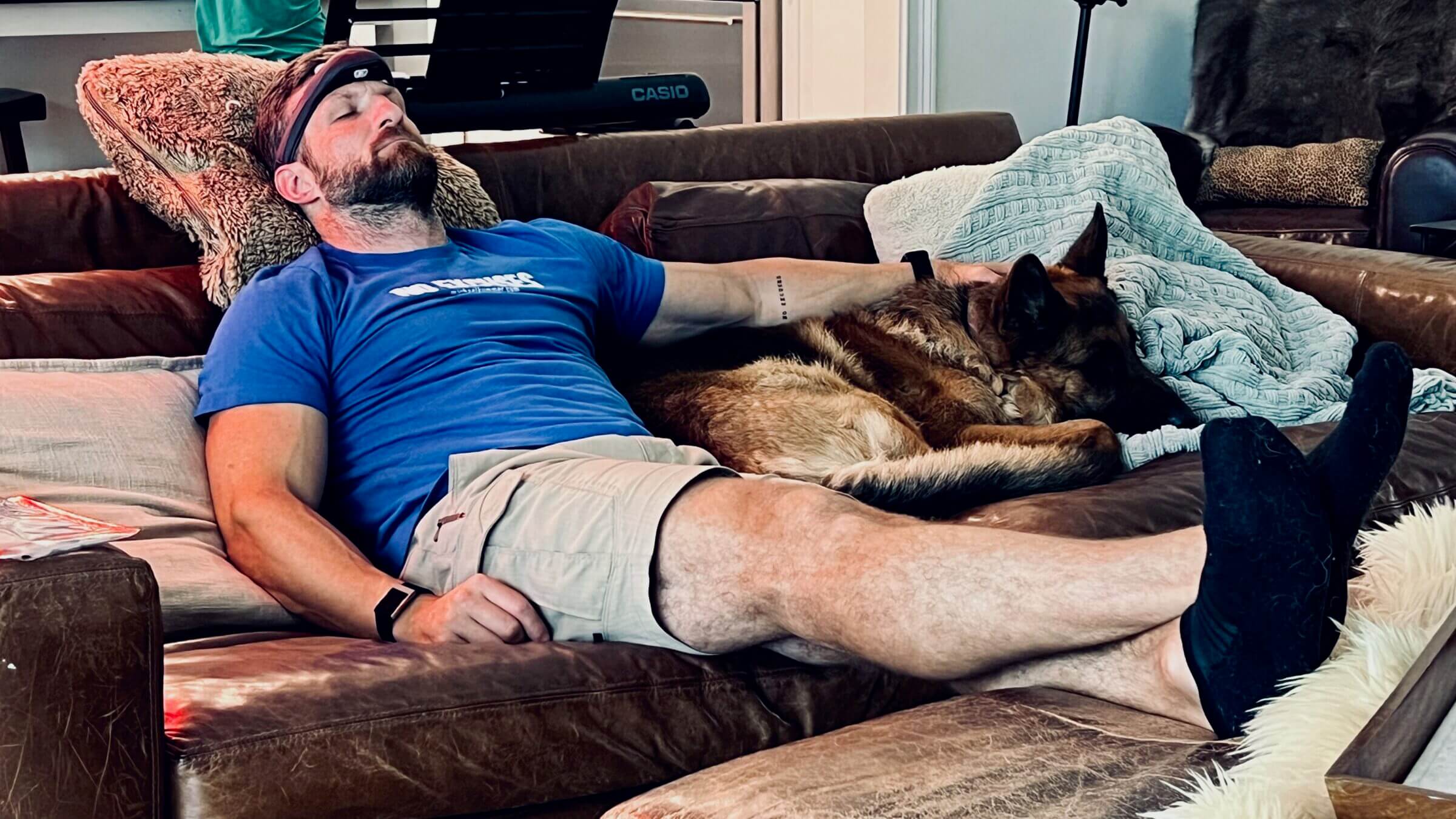
Starting a Somnee session via the app involves a connectivity test (to ensure the sensors are receiving a good signal and the electrodes are correctly connected to the headband), followed by a 30-second baseline recording during which you should keep still and quiet with your eyes closed. After Somnee has established a baseline, you can open your eyes, read a book, have a conversation or even watch TV. That makes it relatively easy to integrate Somnee into your pre-bedtime routine.
The only thing you shouldn’t do is move around a lot, as this can negatively affect the signal quality of the EEG sensors.
I began noticing small changes in my sleep pressure within the first seven Somnee sessions, but my desire to go to bed increased dramatically once Somnee began stimulating my brain (i.e., after it completed its brain mapping process).
My eyes would start feeling heavy, making it incredibly difficult to keep them open, and I knew I was ready to go to bed. On those days, I often fell asleep within minutes.
Objective Measurements
Although wearable sleep trackers have a number of limitations – including their reliance on motion and heart rate data to estimate if you’re asleep and what stage of sleep you’re in – I decided to test Somnee by using a number of devices to collect key sleep data over a nearly two-month period. My goal was to determine whether or not Somnee could objectively improve my sleep, or the factors that influence it.
Specifically, I used the Ultrahuman Ring Air, the Eight Sleep Pod 4 Ultra and the new Muse S Athena (a wearable EEG that can track brain waves while you sleep).
Note that these devices don’t necessarily track the same metrics, or report their data in the same format. As a result, an apples-to-apples comparison between each of them wouldn’t be helpful, and thus the bullet list below reflects some of the most interesting observations from the overall dataset.
Here are the key findings from the 49 nights I tracked:
- My overall sleep scores improved by 0.09, 2.94 and 7.71 points respectively (Ultrahuman, Eight Sleep, Muse S Athena).
- My total sleep time improved by 5 minutes according to Muse.
- My HRV improved by 6.8 ms according to Eight Sleep.
- My resting heart rate decreased by 1.5 BPM according to Eight Sleep.
- My slow-wave intensity (an indication of the quality of my restorative sleep) increased by 11.6 points, according to Muse S Athena.
I also tracked deep sleep, total sleep time and latency, but didn’t think those metrics were reliable enough to include in this analysis.
For example, Eight Sleep starts tracking sleep and latency once I go to bed. But sometimes, I chat with my wife or read a book, which skews the numbers. Likewise, Ultrahuman sometimes thinks I’m sleeping when I’m watching TV and not moving.
And as a general rule, sleep stage analysis is relatively unreliable unless performed in a sleep lab.
For what it’s worth, Ultrahuman and Eight Sleep reported a reduced total sleep time by 16 and 3 minutes, respectively, while Muse (which I put on right before I closed my eyes) reported an increase in sleep time of 5 minutes. Both Ultrahuman and Eight Sleep reported that I spent more time in deep sleep, while Muse thought I spent less time in deep sleep after using Somnee (despite showing more intense slow-wave activity).
When I consider the raw data paired with how I felt before going to sleep and after waking up each morning, I conclude that using the device marginally improved my sleep. That’s impressive since I’ve prioritized my sleep for years, and there’s only so much room for improvement.
I suspect Somnee will likely be even more effective when used by someone who hasn’t dialed in their sleep as much as I have.
Additional Features
The accompanying app offers a sleep journal similar to the one used in scientific sleep studies to assist you with quantifying the benefits you receive from Somnee, even if you don’t own a sleep tracker.
Every morning, you can answer a couple of questions to quantify your feelings and sleep. Based on your journal entries, you can detect trends to help you understand how Somnee has improved your sleep.
I would argue that how you feel before going to bed and half an hour after waking up are much better indications of how you slept than any consumer-grade sleep tracker that uses proxy metrics, such as heart rate and movement, to estimate if you’re sleeping (and in what stage of sleep you’re in).
Additionally, the app offers sleep reports and a sleep readiness score that indicate, based on its sensor readings, how successful Somnee was at improving sleep onset, maintenance and depth.
Pricing and Discount Code

Somnee retails for $429, which includes the headband and annual membership. Alternatively, you can sign up for a monthly membership, which costs $299 upfront plus $18 per month (for the app and replacement electrodes).
If you choose the annual membership, you pay 42 cents a day. (It’s 71 cents per day on the monthly plan.) That’s not bad for potentially improving your sleep quality.
If you decide to try Somnee, use my promo code MK30 to get $30 off the purchase price.
Limitations and Potential Downsides
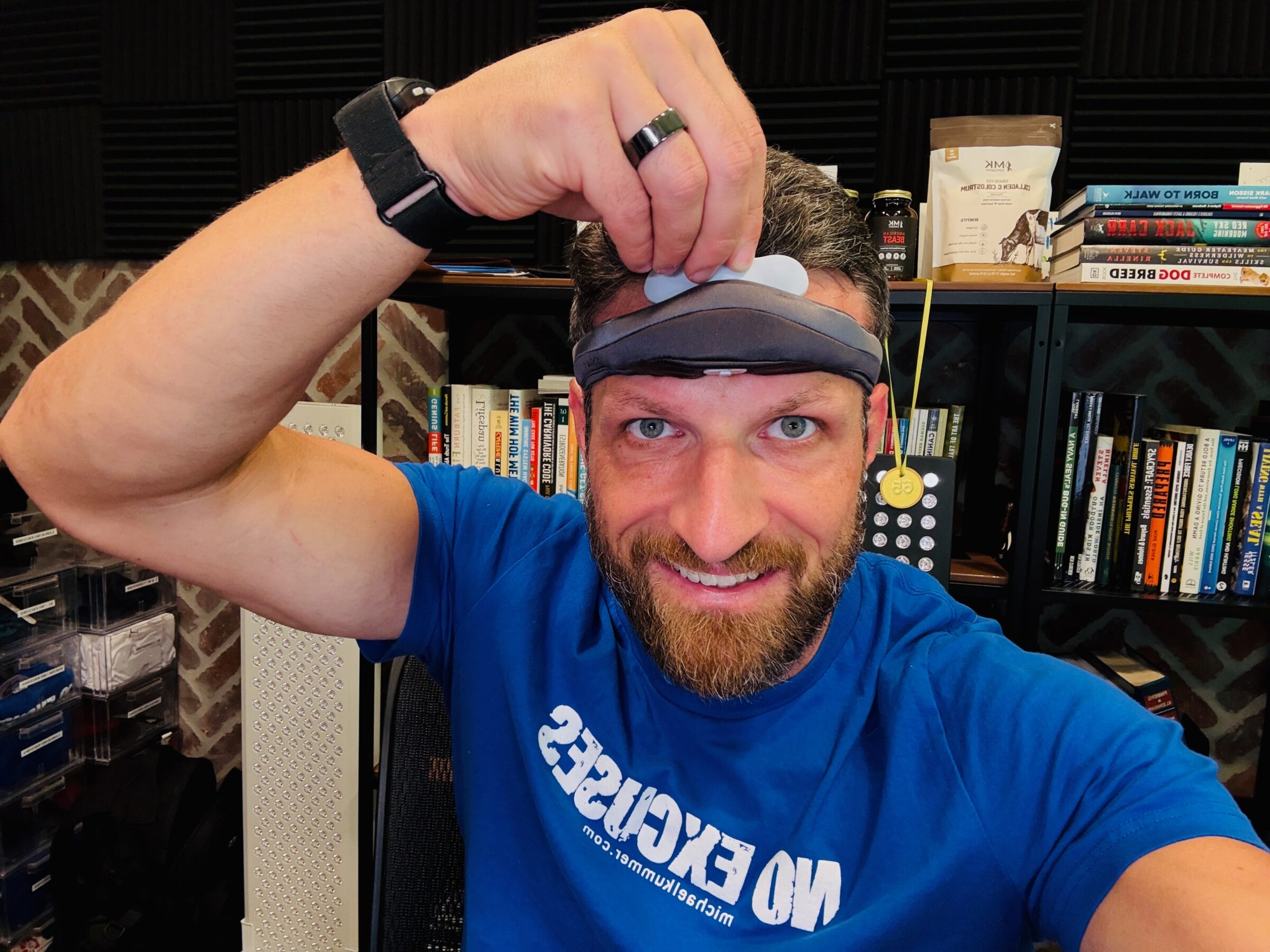
The main limitation of Somnee is that it doesn’t work for everyone. The good news is that Somnee offers a 45-day free trial period, so you can return the device if you’re one of the 20% for whom the device doesn’t work.
Additionally, to use Somnee you have to sign up for a monthly or yearly subscription that covers the daily reporting and the electrodes you have to replace every couple of days.
From a usability perspective, it’s worth noting that Somnee recommends cleaning your skin and avoiding lotions on your forehead to ensure the electrodes work properly. That might interfere with your evening routine. I typically use OneSkin (an anti-aging skincare product that targets cell senescence) in the evening, and have to spare my forehead to avoid interfering with the electrodes.
It’s also advisable to put the electrodes back on the transparent film they come with to protect the sticky side, and to place the headband on the magnetic charger. Both can be cumbersome if you use Somnee in bed and are about to fall asleep.
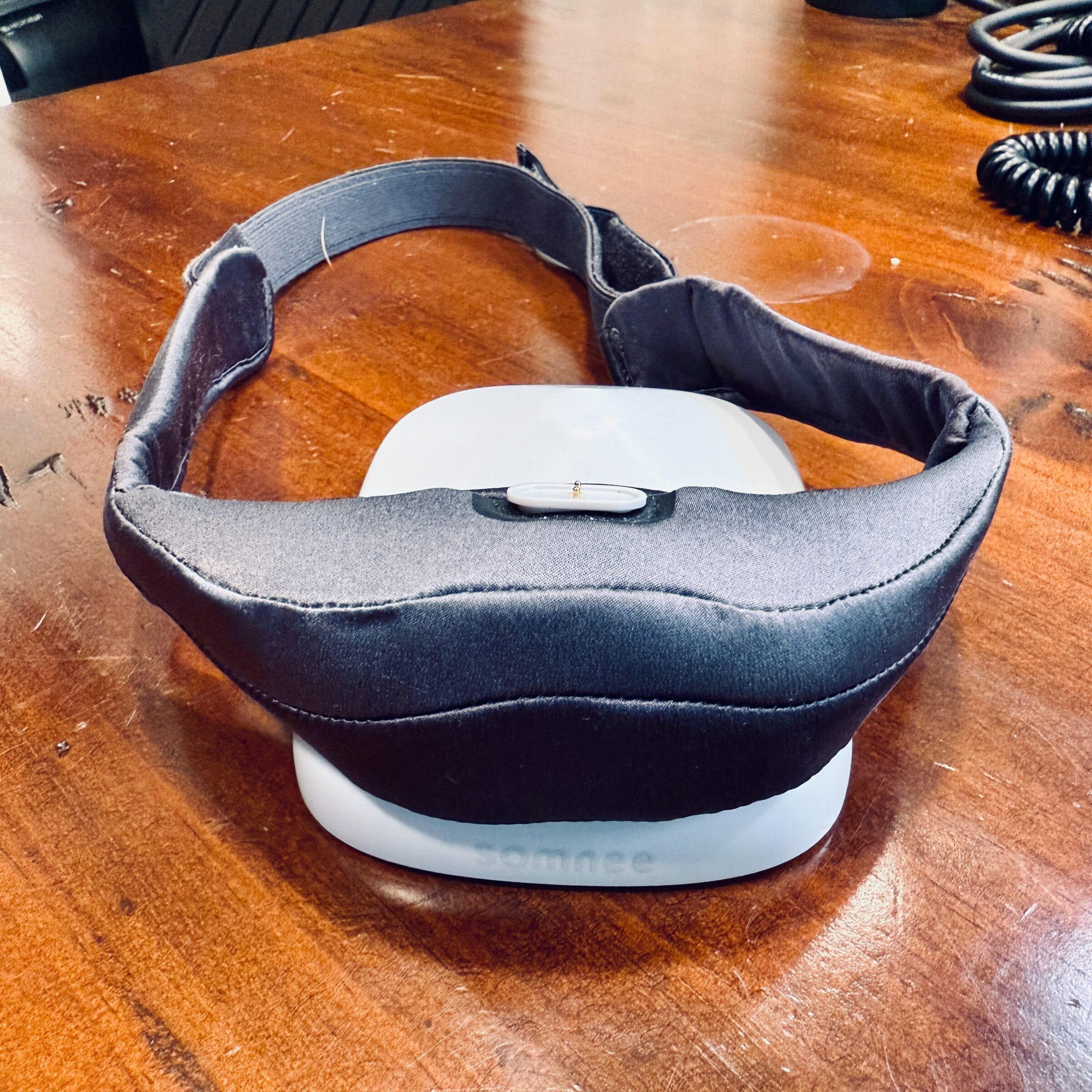
To mitigate that problem, you can position the charger on your nightstand and stick the electrodes to it. However, I keep my nightstand free of electronics and always have to get out of bed to charge Somnee in my office on days I use the device in bed.
That was a bummer, but it usually didn’t interfere with my ability to fall asleep quickly.
Safety
Generally speaking, non-invasive transcranial electrical stimulation (tES) is considered safe when you stick to the standard treatment protocols (usually ≤2 mA for 10–20 minutes, a few times per week). Most people only experience mild, short-lived side effects, like tingling or itching under the electrodes, a slight headache, or transient fatigue — and there’s no strong evidence of tissue damage or seizures at these currents.
The Somnee app allows you to change the intensity of the stim session. I’ve set mine to the highest level and only felt a slightly tingling or burning sensation during some sessions.
Changes to Your Regimen
As I mentioned above, I had to modify my evening routine a bit to incorporate Somnee. Before using the device, I washed my face with soap and avoided using lotion on my forehead.
I also tried using Somnee while watching TV with my wife, so I could place the device in its charger on my way to the bedroom instead of having to get out of bed to walk to my office, which is located between our living room and bedroom.
None of that was a big deal, but a minor inconvenience. In other words, if you’re struggling with sleep, washing your face and avoiding lotion are likely not going to be a major inconvenience. However, if your sleep is already perfectly dialed in, you might not want to bother with making any changes to your routine. But if that’s you, you probably don’t need Somnee.
Somnee Review: Final Verdict

Somnee has the potential to be a game-changer for those who struggle with sleep.
While there are plenty of lifestyle changes you can implement to improve the quality of your sleep – like sticking to a regular bed and wake time, avoiding blue light, alcohol and caffeine before bedtime, and regulating the temperature in your bedroom and under the covers – many people still struggle with falling asleep quickly, staying asleep or falling back asleep after waking up in the middle of the night.
Often, the reason for those struggles is racing thoughts and the inability to calm the mind. Somnee can understand what’s happening in your head and gently stimulate your brain into a mode more conducive to restful sleep.
After reading this article, what’s your take on leveraging devices such as Somnee to help improve sleep? Let me know in the comments!

Michael Kummer is a healthy living enthusiast and CrossFit athlete whose goal is to help people achieve optimal health by bridging the gap between ancestral living and the demands of modern society.
Medical Disclaimer
The information shared on this blog is for educational purposes only, is not a substitute for the advice of medical doctors or registered dieticians (which we are not) and should not be used to prevent, diagnose, or treat any condition. Consult with a physician before starting a fitness regimen, adding supplements to your diet, or making other changes that may affect your medications, treatment plan or overall health. MichaelKummer.com and its owner MK Media Group, LLC are not liable for how you use and implement the information shared here, which is based on the opinions of the authors formed after engaging in personal use and research. We recommend products, services, or programs and are sometimes compensated for doing so as affiliates. Please read our Terms and Conditions for further information, including our privacy policy.

